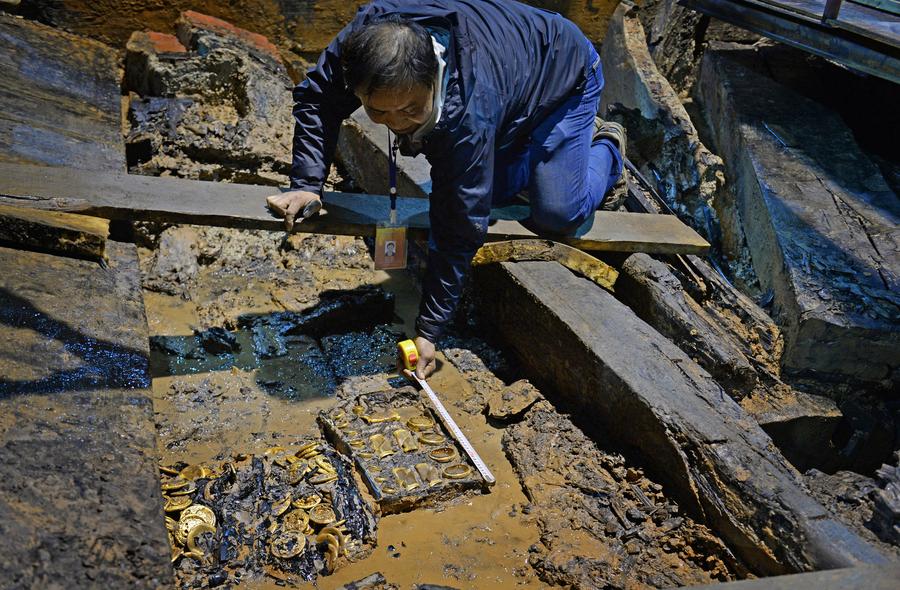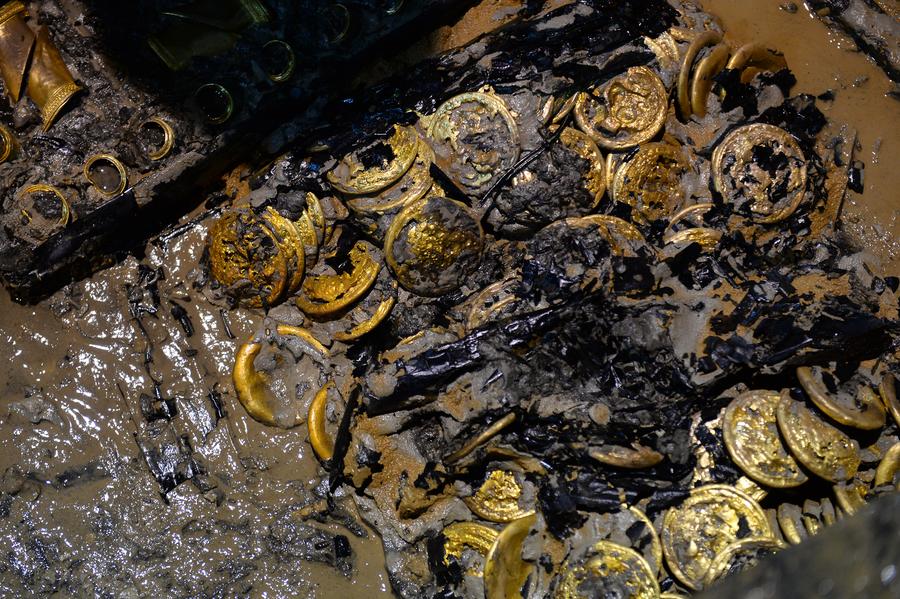
An archaeologist measures the gold items from the tomb of "Haihunhou" (Marquis of Haihun) that dates back to the Western Han Dynasty (206 BC - 24 AD), in Nanchang, capital of East China's Jiangxi province, Nov 17, 2015. Chinese archaeologists on Tuesday discovered 75 gold coins and hoof-shaped ingots in the tomb. The gold objects -- 25 gold hoofs and 50 very large gold coins -- are the largest single batch of gold items ever found in a Han Dynasty tomb. [Photo/Xinhua]
The number of gold coins found in the "Haihunhou" (Marquis of Haihun) cemetery has risen to 187, far exceeded experts' previous expectations of around 50, according to Beijing Morning Post.
Two boxes of large gold coins, one containing 88 coins and the other 99, were unearthed from the tomb, Yang Jun, head of the excavation team, said on Sunday. Twenty-five hoof-shaped ingots were also discovered at the same time. The gold items were transported to a laboratory for further research.
The gold objects are the largest single batch of and best preserved gold items ever found in a Han Dynasty tomb, according to archaeologists.
As the gold coins are very heavy, the lacquer boxes holding them were broken when they were discovered. Measurements in the lab show that one coin weighs 250 grams, which is worth about 55,000 yuan ($8,611), based on the price of gold on today's market.

Gold coins discovered in the tomb of "Haihunhou" (Marquis of Haihun) that dates back to the Western Han Dynasty (206 BC - 24 AD) are seen in Nanchang, capital of East China's Jiangxi province, Nov 17, 2015. Chinese archaeologists on Tuesday discovered 75 gold coins and hoof-shaped ingots in the tomb. The gold objects -- 25 gold hoofs and 50 very large gold coins -- are the largest single batch of gold items ever found in a Han Dynasty tomb. [Photo/Xinhua]
A Boshan censer and jade items, along with several bronze items, also were discovered on the site. A jade pendant among the unearthed items, decorated with dragon and phoenix patterns, amazed archeologists with its fine quality and elegant appearance; it is said to represent the highest level of jade craft in the Han Dynasty.
The tomb of "Haihunhou" dates back to the Western Han Dynasty (206 BC - 24 AD) in Jiangxi and is the best-preserved royal tomb of the era ever discovered in China. Archaeologists have so far unearthed more than 10,000 heritage pieces from the tomb since its discovery in 2011, including chariots, bronze cooking utensils, wine vessels, lamps and ancient coins.





